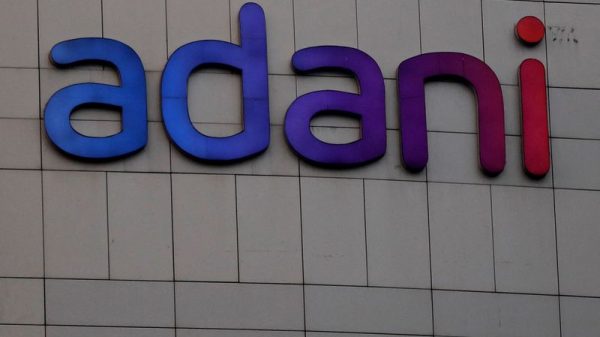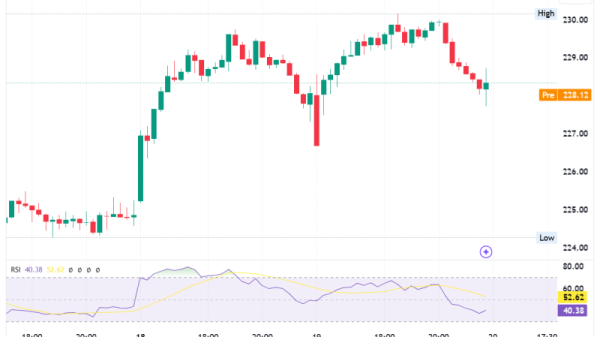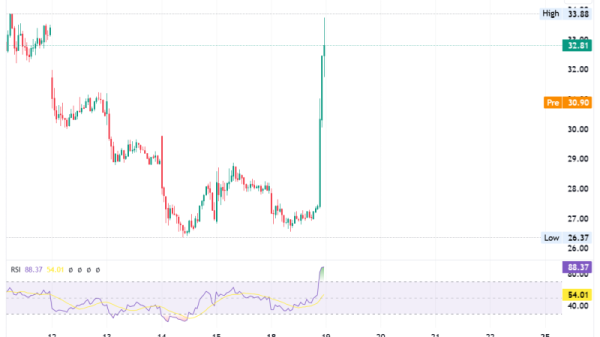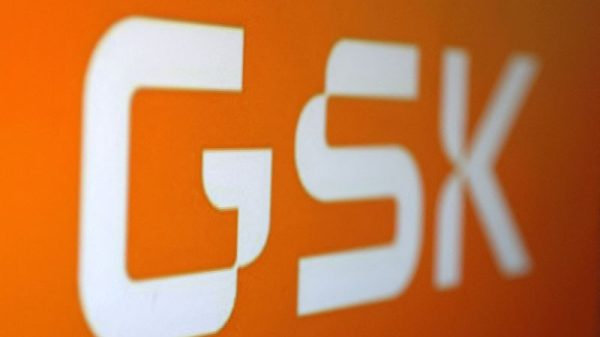Fabrinet (NYSE: NYSE:FN), a leading provider of advanced optical packaging and precision optical, electro-mechanical, and electronic manufacturing services, has reported a strong start to the fiscal year 2025.
In its Q1 earnings call, CEO Seamus Grady announced a 17% year-over-year revenue increase to $804 million, with a 7% rise from the previous quarter. The company’s operating margin stood at 10.7%, and non-GAAP EPS reached $2.39, despite a foreign exchange headwind of $0.19. Optical communications, particularly in the Datacom and Telecom sectors, as well as automotive sales in EV charging infrastructure, drove the revenue growth.
With a focus on their partnership with Nvidia (NASDAQ:NVDA) and the anticipated ramp-up of 1.6 terabit transceivers, Fabrinet expects to continue its growth trajectory in Q2 FY2025.
Key Takeaways
- Q1 FY2025 revenue reached $804 million, a 17% increase year-over-year.
- Operating margin reported at 10.7%, with non-GAAP EPS of $2.39.
- Optical communications revenue at $626 million, with Datacom and Telecom sectors showing significant growth.
- Non-optical communications revenue, driven by automotive sales, reported at $178 million.
- Q2 FY2025 revenue forecast between $800 million and $820 million.
- Company progressing on Building 10 construction to expand footprint by over 50%.
- Total cash and short-term investments at $909 million, with $200 million authorized for share buybacks.
Company Outlook
- Revenue expected to remain strong in Q2 FY2025, with projections between $800 million and $820 million.
- Continued growth anticipated in Datacom, Telecom, and automotive sectors.
- Gross margins may be pressured by the strengthening Thai Baht, but operating margins should remain stable.
Bearish Highlights
- Foreign exchange headwinds impacted earnings by $0.19 in Q1.
- Gross margins may face pressure from the strengthening Thai Baht.
Bullish Highlights
- Datacom revenue increased 36% year-over-year, reaching $329 million.
- Telecom revenue grew for the first time in six quarters, hitting $297 million.
- Strong automotive sales, particularly in EV charging infrastructure, contributed to non-optical communications revenue.
Misses
- There were no significant misses reported in the earnings call.
Q&A Highlights
- Grady expressed confidence in the company’s ability to meet demand for the upcoming 1.6 terabit transceivers.
- The company holds a 100% market share for Nvidia-designed optical transceivers.
- No capacity constraints for 400 gig, 800 gig, or the upcoming 1.6 terabit transceivers.
- Growth in the Telecom segment, especially in the Coherent (NYSE:COHR) ZR market, is expected to continue.
- Interest rates are expected to decline, but the company’s increasing cash position should help maintain steady income levels.
Fabrinet’s optimistic outlook is underpinned by their strategic partnership with Nvidia and the anticipated ramp-up of 1.6 terabit transceivers, which are expected to generate significant revenue once Nvidia’s Blackwell platform overcomes yield challenges at the foundry level.
The company is also diversifying its Telecom offerings with new business wins in the DCI product space. With a strong cash position and strategic investments in expansion, such as the construction of Building 10, Fabrinet is positioning itself for sustainable growth in the global markets.
InvestingPro Insights
Fabrinet’s strong financial performance and positive outlook are further supported by key metrics and insights from InvestingPro. The company’s market capitalization stands at $8.69 billion, reflecting its significant presence in the Electronic Equipment, Instruments & Components industry.
InvestingPro data shows that Fabrinet’s revenue for the last twelve months as of Q4 2024 was $2.88 billion, with a healthy growth rate of 8.99%. This aligns with the company’s reported 17% year-over-year revenue increase in Q1 FY2025, indicating a consistent growth trajectory. The quarterly revenue growth of 14.85% in Q4 2024 further underscores the company’s strong performance.
Fabrinet’s profitability is evident from its operating income margin of 9.64% and EBITDA of $326.01 million for the last twelve months. The company’s diluted EPS (Continuing Operations) of $8.10 supports the positive earnings report mentioned in the article.
InvestingPro Tips highlight that Fabrinet holds more cash than debt on its balance sheet, which is consistent with the reported $909 million in total cash and short-term investments. This strong liquidity position supports the company’s ability to fund its expansion plans, such as the construction of Building 10, and maintain its $200 million share buyback program.
Additionally, InvestingPro Tips reveal that six analysts have revised their earnings upwards for the upcoming period, aligning with the company’s optimistic outlook for Q2 FY2025. The tip indicating that Fabrinet’s cash flows can sufficiently cover interest payments further reinforces the company’s financial stability.
It’s worth noting that Fabrinet has shown strong returns over various time frames, with a 22% price total return over the last three months and a 33.7% return over the last six months. This performance is in line with the company’s reported growth and positive market reception.
For investors seeking more comprehensive insights, InvestingPro offers additional tips and analysis. Currently, there are 13 more InvestingPro Tips available for Fabrinet, providing a deeper understanding of the company’s financial health and market position.
Full transcript – Fabrinet (FN) Q1 2025:
Operator: Good afternoon. Welcome to the Fabrinet Financial Results Conference Call for the First Quarter of Fiscal Year 2025. At this time, all participants are in a listen-only mode. Later, we will conduct a question-and-answer session, and instructions on how to participate will be provided at that time. As a reminder, today’s call is being recorded. I would now like to turn the call over to your host for today, Garo Toomajanian, Vice President of Investor Relations. Please go ahead.
Garo Toomajanian: Thank you, operator, and good afternoon everyone. Thank you for joining us on today’s conference call to discuss Fabrinet’s financial and operating results for the first quarter of fiscal year 2025, which ended September 27, 2024. With me on the call today are Seamus Grady, Chief Executive Officer; and Csaba Sverha, Chief Financial Officer. This call is being webcast and a replay will be available on the Investor section of our website located at investor.fabrinet.com. During this call we will present both GAAP and non-GAAP financial measures. Please refer to the Investors section of our website for important information, including our earnings press release and investor presentation, which include our GAAP to non-GAAP reconciliation, as well as additional details of our revenue breakdown. In addition, today’s discussion will contain forward-looking statements about the future financial performance of the company. Forward-looking statements are subject to risks and uncertainties that could cause actual results to differ materially from management’s current expectations. These statements reflect our opinions only as of the date of this presentation, and we undertake no obligation to revise them in light of new information or future events except as required by law. For a description of the risk factors that may affect our results, please refer to our recent SEC filings, in particular the section captioned Risk Factors in our Form 10-K filed on August 20, 2024. We will begin the call with remarks from Seamus and Csaba, followed by time for questions. I would now like to turn the call over to Fabrinet’s CEO, Seamus Grady. Seamus.
Seamus Grady: Thank you, Garo. Good afternoon and thanks to those of you joining our call today. We started fiscal year 2025 with significant momentum across our business. First quarter revenue of $804 million was well above the top-end of our guidance range, increasing 17% from a year ago and 7% from Q4. Margins were very healthy with operating margin of 10.7% in the quarter. These results enabled us to deliver non GAAP EPS at the upper end of our guidance range of $2.39 even after a $0.19 headwind from foreign exchange revaluations in the quarter. All-in-all, we are very proud of these results and our strong start to the fiscal year. As we anticipated, revenue was up sequentially and year-over-year for every major product group. In Optical Communications, Datacom revenue grew 36% from a year ago, driven mainly by optical interconnect products for AI applications. We remain optimistic about positive long term Datacom trends for our business and are positioned as a leading contract manufacturer serving this rapidly expanding market. We are encouraged by the results of our Telecom business in the quarter, which saw year-over-year revenue growth for the first time in six quarters. Demand for traditional Telecom products appears to have levelled-out, while growth continues to come from data center interconnect products, as well as Telecom systems where we continue to win business. We are optimistic that over time the Telecom headwinds that the industry has been experiencing will turn into tailwinds and that our Telecom revenue growth will be further bolstered by continued demand for DCI and Telecom system products. Turning to non-optical communications, we saw accelerating revenue growth in the quarter, driven mostly by strong automotive revenue that exceeded $100 million for the first time. Within the automotive market, EV charging infrastructure products continue to see excellent momentum. Industrial laser revenue was also strong reaching its highest level in two years. We believe these strong automotive and industrial laser trends can continue into the second quarter. As you know, last quarter we announced that we would be breaking ground on Building 10 during the fiscal year. I’m happy to report that we are making significant progress in lining up contractors and receiving the necessary approvals. We are optimistic that construction will begin by the end of the calendar year on this facility, which will increase our total footprint by more than 50% and help support our growth for the next several years. In summary, we had an excellent start to fiscal year 2025, highlighted by continued acceleration in revenue growth, while also continuing to deliver industry leading operating margins. We’re optimistic that our positive business momentum will extend into the second quarter, as reflected in the outlook that Csaba will discuss in a moment. Now I’ll turn the call over to Csaba for more financial details on our first quarter and our guidance for the second quarter of fiscal 2025. Csaba?
Csaba Sverha: Thank you, Seamus, and good afternoon, everyone. We had a great start to the year. First quarter revenue of $804 million increased 17% from a year ago and 7% from Q4 and represented a new record level of revenue for the company. The higher exchange rate for the Thai Baht meant that our FX evaluation loss was higher than expected in the quarter at $7 million or $0.19 per diluted share. Even with that headwind, non GAAP EPS was at the upper end of our guidance range at $2.39. Details of our revenue breakdown are included in the investor presentation on our website, and I will focus my comments on some of the more notable metrics. In the first quarter, optical communications revenue was $626 million or 78% of total revenue, up 17% from a year ago and 5% from Q4. Within optical communications, Datacom revenue was $329 million or 53% of optical communications revenue, an increase of 36% from a year ago and 5% from the prior quarter. Telecom revenue was $297 million or 47% of optical communications revenue and increased 2% from a year ago and 6% from Q4. Looking at the optical communications trend by data rate, the most noteworthy result was the relative strength of products rated below 800 gig. Revenue from products below 800 gig was $262 million in the first quarter, up 30% from a year ago and 17% from Q4. The strong performance was due to strength from Datacom programs and from certain datacenter interconnect products such as 400ZR, which are classified as Telecom products. And in the fourth quarter, 400ZR products were 10% of optical communications revenue. Revenue from products rated 800 gig or faster was $257 million, up 19% from a year ago and down 1% from Q4, as new customer programs are early in their product ramps. Revenue from optical communications products that are non-speed rated, including rodents, amplifiers, fiber arrays, and other devices was $107 million, down $7 million from Q4. Revenue from non-optical communications saw strong growth in the first quarter at $178 million, up 17% from a year ago and 13% from Q4. This growth continues to be driven mainly by EV charging infrastructure programs in the automotive market. As I discussed the details of our P&L, expense and profitability metrics will be on a non-GAAP basis unless otherwise noted. Gross margin in the first quarter was 12.7%, an increase of 20 basis points from the fourth quarter. Operating expenses were $16 million and were again less than 2% of revenue. Operating income was a record $86 million, representing an operating margin of 10.7%, which was consistent with the fourth quarter. Interest income of $11 million in the quarter was in-line with Q4. A large part of this income was offset by the greater than expected foreign exchange evaluation loss of $7 million. Effective GAAP tax rate was 4.2% in the first quarter. We expect that our tax rate will remain in the mid-single digits this year. Non-GAAP net income was $87 million or $2.39 per diluted share. Turning to our balance sheet. We ended the first quarter with cash and short-term investment of $909 million, up $50 million from the end of the fourth quarter. Operating cash flow in the quarter was consistent with Q4 at $83 million. CapEx was $20 million resulting in free cash flow of $63 million in the first quarter. During the first quarter, we did not repurchase any shares. We anticipate being more active in our repurchase program during the remainder of the fiscal year and have $200 million authorized for share buybacks. Now I will turn to our guidance for the second quarter of fiscal year 2025. We are optimistic that after delivering five quarters in a row of record-breaking revenue, we are well-positioned for another record quarter. For the second quarter, we expect total revenue to be between $800 million and $820 million. By major product area, we anticipate year-over-year growth from each of Datacom, Telecom, and Auto. On a sequential basis, we anticipate growth in total revenue as well, driven mainly by Telecom with Datacom and Auto flat to slightly up from Q1. We expect top-line strength to also be reflected in our profitability results. We anticipate that a strengthening Thai Baht will begin putting increased pressure on gross margins. We believe we can largely offset that impact with continued operating leverage, which should result in operating margins consistent with our recent performance. As a result, we anticipate EPS to be between $2.44 to $2.52 per diluted share. In summary, we are excited with our strong start to fiscal 2025 and are confident that we will see continued momentum in our business as we look ahead. Operator, we are now ready to open the call for questions.
Operator: Thank you. [Operator Instructions] And our first question for the day will be coming from Karl Ackerman of BNP. Your line is open.
Karl Ackerman: Yes, thank you. I appreciate the outlook for the December quarter with regard to the end markets themselves. Specifically though, with regard to Datacom and Auto, they sound to be largely flattish sequentially in December. But if we could just drill down a bit further, do you anticipate growth of 800 gig transceiver revenue in the December quarter, or should we anticipate that 800 gig [trend revenue] (ph) maybe flat to down through the first half of 2025 until 800 gig network interface cards are more readily available in the market? And I have a follow up, please?
Seamus Grady: Hi Karl, thanks for the question. So yeah, if you look at our Datacom growth, we’re very optimistic about the long-term Datacom trends, and we believe we will continue to be the beneficiary of growth in the Datacom market. Of course, our biggest Datacom program with Nvidia, it’s a little different from, than most, in that they have also qualified optical transceivers from merchant vendors but we’re the sole source for their designed products. What we have seen is a little bit of mix shift in the quarter. Our Datacom business is up but the mix has shifted around between 400 gig and 800 gig, really while we transition to [1.6] (ph). So we still have 100% market share of the Nvidia designed transceivers irrespective of data rates, but the exact timing of let’s say when 1.6 would begin to ramp in earnest and what the outlook is for 800 versus 400, we wouldn’t really be prepared to give that level of granularity. But 800 gig remains robust, 400 gig remains robust, and we have a lot of installed capacity for really all of those speeds. And we’re getting geared up, I guess, to ramp 1.6 once the product that it goes into becomes more generally available. Our overall relationship with Nvidia remains very strong. We do a very good job for them. They’re very happy with our performance. And we continue to install capacity to support their needs.
Karl Ackerman: Yeah, thanks for that. I appreciate that. For my follow-up, is the pickup in 400 gig revenue entirely weighted toward growth of coherent ZR pluggables or is there a new business win or something else with regard to 400 gig Datacom that’s driving that sequential uptick – [the quarter]. (ph) Thank you.
Seamus Grady: Yeah, there’s a new business win there that is primarily responsive for the growth. And it’s a mix. Some of it is mixed shift with our main customer between 800 and 400. But there’s also a nice chunk of growth with a new win at 400 gig.
Karl Ackerman: Perfect. Thank you. I’ll see the floor.
Seamus Grady: Thank you, Karl.
Operator: Thank you. One moment for the next question. And our next question will be coming from the line of Tim Savageaux of Northland Capital. Your line is open.
Tim Savageaux: Hi. Good afternoon. Can you guys hear me okay?
Csaba Sverha: Yes Tim, we can hear you fine.
Tim Savageaux: Okay, great. I’m [acting a little weird] (ph). I just want to follow up on that discussion you were just having with regard to a new business win with, I’m assuming that’s with a current customer and just sort of extending your reach there or is that a new customer and did you say whether that was Telecom or Datacom?
Seamus Grady: It’s with an existing customer. In fact, you’re right Tim, it is a Telecom product actually. It’s a DCI product with an existing customer. So it’s actually not a Datacom win, it’s a Telecom win, although it is a 400 gig transceiver.
Tim Savageaux: Got it. And I think you addressed this, but I just want to make sure I heard it right. And the mix shift you’re talking about in Datacom is within your biggest customer or are there other customers doing 400 gig that’s driving that mix shift? I think it was the former.
Seamus Grady: Yeah, the former. The mix shift that I talked about is the mix between 800 and 400 gig, which again, we don’t fully have visibility as to what’s causing that at all times. But for us, again, our focus is on making sure we’re servicing what the customer needs from us for their design products. And sometimes, like we saw last quarter, there’s a little bit of mix shift, a little bit more 400 gig than we would have thought maybe going into the quarter maybe a little bit less 800 gig and then you know 1.6 we’re getting geared up to ship as soon as the you know to ship in volume as soon as the customer gives us the signal to start ramping that. But yeah, that makeshift was within our main customer there.
Tim Savageaux: Okay, but I’m, and once again, just following what you’re just discussing there on 1.6. Sounds like it’s safe to assume there’s no 1.6 revenue in the December quarter guide.
Seamus Grady: There would be some, but not that we’d break that out, but yeah, there would be some. I mean, we would have to have already been shipping some level of 1.6. We’re not going to go from a standing start to ramp. So we have been shipping a little bit. We continue to ship. But the significant ramp is in front of us.
Tim Savageaux: Okay great and last one for me, speaking of new customers, I wonder if you can give us an update or you know over the course of the quarter you have any greater visibility into when you expect material business with Sienna to ramp?
Seamus Grady: Yeah, I think the timeline we spoke about last quarter is still pretty much accurate. You know, I think it’s probably at this stage, nine months or so away from being significant revenue for us. But everything’s on track. No major changes there since last time we spoke. We’re still very excited about that, very happy with that win and working very hard to make sure we do a good job for Sienna. But no big changes since we last spoke. We have picked up additional non-Sienna new business in the quarter as well, but one not that we can name. Unfortunately, we look to our customers to give us the go ahead if we can name them or not, but we have picked up additional business, new business to us. In one case, you know, a new program, and in the other case, it’s share gain in the optical space. But back to your question, Tim, no big change since we last spoke on Sienna.
Tim Savageaux: Okay, if I just get one more quick one in there, with regard to what you just mentioned in terms of the new, so that’s optical systems business that you’re referencing in these new programs, or share gain?
Seamus Grady: Yes, in one case it’s a new product that we’ve been working with the customer on for some time. And in the other case, same customer, it’s share gain where we’re taking a piece of system business away from one of our competitors.
Tim Savageaux: Great, Thanks very much.
Seamus Grady: Thank you, Tim.
Operator: Thank you. One moment for the next question, please. And our next question will be coming from the line of Samik Chatterjee of JPMorgan. Your line is open.
Samik Chatterjee: Hi. Thank you for taking my questions and two questions, if I may. Seamus, you talked about the 800 gig revenue of the mix between 800 gig and 400 gig with your primary Datacom customers shifting a bit within the quarter. I was more curious if you sort of dial down into 800 gig in particular, are you seeing a mix shift in terms of your primary customers willingness to use outside suppliers with sort of different designs versus the in-house design where you are the 100% supplier? Are you seeing any mix shift relative to sort of internal versus external design and their willingness to use that within 800 gig as well. Thank you.
Seamus Grady: Yes, Samik, we don’t really have visibility into how the customer makes those decisions. Yeah, as you rightly say, our biggest Datacom program with Nvidia, we’re the sole source for their designed products, their designs transceivers 400, 800, and 1.6, et cetera. But they have designed, or they have approved for use in their network transceivers from merchant vendors to complement the transceivers of their own design, which again are manufactured by us. This really helps them to secure supply, not from any manufacturing constraints on our side but more so you know their ability to access alternate parts and components alternatives to those that are designed into their own transceivers. We don’t control or even really have any visibility into how our customer decides which devices to use where. However, our customers, including Nvidia, our largest Datacom customers, they commit significant resources for equipment and capacity at our sites and it’s specific to their products. And of course they’re motivated to leverage that capacity and those investments as much as they can. That said, we do have visibility into demand for current and upcoming products that we are manufacturing for our customers. And based on that visibility, we’re very optimistic that we’re well positioned to see continued growth. But I think they’ve approved, like I said, they’ve approved a number of merchant suppliers for transceivers and they tend to use us and the merchant transceivers, but exactly how that decision gets made we don’t really have visibility to. Our focus is on just ensuring that we satisfy everything that they need from us and that we retain our position as the sole source for their designed transceivers.
Samik Chatterjee: Got it. And if I can just clarify and also move to my second question. So in terms of clarification, just to confirm that you don’t have any capacity shortages in terms of the capacity to cater to the 800 gig demand from your primary customer that you talked about where they sort of help you with the equipment, et cetera. And then for my second question, autos, I mean, I haven’t seen any positive autos data points in a while in this macro backdrop. So how you sort of really getting, driving confidence that what you’re seeing in terms of autos demand is not an inventory refill versus a more sustainable sort of demand improvement there. And thank you, that’s all from my side, thank you.
Seamus Grady: No problem. Yeah, just confirm, no, we have no capacity constraints at any of the speeds at 800 gig, 400, 1.6, we have no capacity constraints for our main customer there. On automotive, yeah, we have seen some nice growth in automotive and it’s driven by share gain, not by inventory correction or anything like that, our inventory correction rebound share gain, where we have taken business away from a competitor again with our main customer there on the automotive EV charging infrastructure side of the business. So it’s share gain. So we’re quite optimistic that’s sustainable. We have to perform, we have to deliver, of course, and what the customer give us, the customer can take it away. But we’re quite optimistic that — that business is going nicely, and we’re very happy with that relationship. So it’s share gain, not inventory rebound.
Samik Chatterjee: All right, thank you. Thanks for taking my questions.
Seamus Grady: No problem. Thank you Samik.
Operator: Thank you. [Operator Instructions] Our next question will be coming from the line of George Notter of Jefferies. Your line is open.
George Notter: Hi there. Thank you very much. I guess I wanted to ask more about 1.6 terabit transceivers for your primary customer. How do I think about the milestones that you guys have to go through in order to generate much more significant revenue? Is it simply a matter of them shipping the Blackwell platform in greater quantities and that’s the catalyst for you guys? Or are there other milestones like specific qualifications or anything like that? I’d love to learn more about that. Thanks.
Seamus Grady: Thank you, George. Yeah, so it really is down to our main customer there shipping Blackwell. You know, they have talked publicly about they had some, I think, some design challenges, some yield issues. I think they call it some yield challenges for Blackwell, nothing to do with what we’re doing, I think it’s more at the foundry level. So really, once those issues are behind them and Blackwell begins to ramp in earnest, we’re ready to go. So it’s really a question of when the customers is beginning to start shipping Blackwell, we should start to see 1.6 ramp up. There’s a whole range of steps we have to go through to get qualified, but that’s just normal business in terms of throughput and cost and yield and everything else. And we work very closely with our customer on all of those detailed milestones, but nothing too unusual about that. It’s really just a case of Blackwell beginning to ramp. That we believe will drive the demand increase that we’re hoping to see for 1.6.
George Notter: Got it, super. And any constraints on componentry? I know in the marketplace, people have been talking about constraints on EMLs, other components, anything that feeds into that opportunity that you see as a constraint component wise?
Seamus Grady: None that we can really speak to, no. I think the customer has done a really outstanding job making sure that there is ample supply and capacity and also alternatives in place for several of the critical components. Maybe one of the good things about – if Blackwell has been delayed by a little bit, one of the good things about that is it has given the customer and, of course, ourselves extra time to make sure we have ample sources for each of the critical components. So we’re quite optimistic about that. We think once 1.6 begins to ramp we should be in good shape.
George Notter: Great, super. Thanks very much, I appreciate it.
Seamus Grady: No problem, thank you George.
Operator: Thank you. One moment for the next question. And our next question will be coming from the line of Ryan Koontz of Needham. Your line is open.
Ryan Koontz: Great. Thanks for the question. We’re hoping to unpack Telecom a little bit here. Sounds like Coherent ZR, former ZR is the main driver there. And you talked about some systems business that’s a share gain. So I assume that means the balance of the business remains relatively stalled. So A, if you can confirm that, and then B, do you see ZR potentially cannibalizing some of that legacy business? Have you seen any of that in your thoughts with your customers in terms of forecasts and such?
Seamus Grady: Thanks Ryan. So yeah, what we’ve seen in the quarter, if you take our Telecom business and you kind of break it into a couple of different buckets if you like, there’s the growth that we have been seeing in Telecom while the overall business had been down for a while, you know, ZR, DCI as a category has been quite strong for us and primarily ZR. We did see what we would call traditional Telecom begin to flatten out. So we’re now starting to see some growth in traditional Telecom. So, you know, I suppose we’re optimistic that traditional Telecom business, which for some time has been a headwind, we think that’s about to turn to a tailwind in the coming quarters. ZR and the degree to which ZR is cannibalizing other products, there probably is a degree of that going on. We wouldn’t be best positioned to talk about that, because of course we don’t make every product for every customer, so we don’t have perfect visibility into that. But certainly we’ve been very happy with the growth in ZR. And as you said, the new business win that we had in the quarter was also a ZR product. So we’re quite excited about ZR. From our point of view, if it cannibalizes something else as long as we’re making the ZR, we’re okay with that. But again, not too sure if it’s cannibalizing existing products or not – not sure about that.
Ryan Koontz: Yeah, that’s fair Seamus. And on the ZR side then, how many major customers do you have for that? And do you have any idea what kind of global share you might have for ZR pluggable Coherent?
Seamus Grady: Right now we have we have six ZR customers of varying sizes and they have varying market shares. We think we have a couple of the leaders in the space, but we have six as ZR customers overall. Our share of ZR, we don’t have great visibility to it. It’s a pretty new, relatively new market. So I guess we know what the numerator is, the denominator, we’re not quite clear on. But we’re just focused on winning as many of those customers as we can and all of the critical, the key new products with those customers and then making sure that where we can, we’re helping those customers qualify the components that go into the ZR module, as well as the ZR module itself. So we work very hard with our customers to bring up their capability and their capacity but — and answer your question with six ZR customers right now.
Ryan Koontz: Great, and I’m sure your strong position at 400 positions you well for 800 ZR when that turns up. Do you have a rough idea when you think you might see some volume there at 800 ZR?
Seamus Grady: Yes, it’s already shipping.
Ryan Koontz: Great. Alright, that’s all I’ve got. Thanks so much.
Seamus Grady: Thank you, Ryan. Thank you.
Operator: Thank you. One moment for the next question.
Operator: And our next question will be coming from the line of Mike Genovese of Rosenblatt Securities. Your line is open.
Michael Genovese: Great, thanks. I miss [Technical Difficulty]
Seamus Grady: Mike, we can’t hear you, Mike.
Michael Genovese: Okay, I can’t do anything about that. So I’ll have to pass.
Seamus Grady: We can hear you now. We can hear you now. Go ahead, we can hear you now.
Michael Genovese: Okay, perfect. I’m just curious, have you won any systems business with your main Datacom customer that you can talk about?
Seamus Grady: System business with our main Datacom customer. I mean our place, if you like, in the supply chain with our main Datacom customer is we’re their prime contract manufacturer for their optical interconnect products. You know that’s really our focus. We’re not trying to be greedy and go after everything. They have other suppliers and other contract manufacturers that they use. So our focus is on making sure we satisfy everything that they need from the optical interconnect side. That’s our primary focus.
Michael Genovese: Okay, got it. And I know this was asked earlier, but just I want to check again on the 1.6 terabit. You’re not seeing anything in the laser or any other component supply chain that would take the beginning of that cycle. Could be supply constraints, nothing else?
Seamus Grady: Yeah, there’s a number of — I would say, new component sources that are being qualified and have been qualified already. So I think in the early days of any of these products, there’s always component constraints. Somewhere along the line, there’s always component constraints. But overall, I think I’m pretty impressed with the job that our customer has done in making sure they have ample supply and ample sources for all of the main components that go into the products. So I could be wrong, but I’m not expecting there to be huge constraints on the component side.
Michael Genovese: Okay and then finally just on the model, how should we model interest and other income for 2Q and then beyond that? What would you encourage us to put in the model?
Csaba Sverha: Hi Mike, this is Csaba. Obviously we are guiding one quarter at a time and as you have seen our interest income was somewhat flat in the last two quarters. So I think there will be two dynamics going on as interest rates will be coming down obviously it would present some headwinds but at the same time our cash position has been increasing over time as well. So this helped us to maintain. So I would be reluctant to give you any outlook beyond Q2. But on longer-term, as interest rates are coming down, obviously that will present some sort of headwinds in the future.
Michael Genovese: All right, thanks very much.
Operator: Thank you. This does conclude the Q&A session for today. And I would like to go ahead and turn the call back over to Seamus for closing remarks. Please go ahead.
Seamus Grady: Thank you for joining our call today. We’re off to a great start in fiscal year 2025 with another quarter of record revenue with significant business momentum and several growth drivers benefiting us. We are optimistic the Q2 will represent another strong quarter for the company. We look forward to speaking with you again and to seeing those of you who will be attending the Needham virtual conference in a couple of weeks. Goodbye.
Operator: Thank you all for joining today’s conference call. You may now disconnect.
This article was generated with the support of AI and reviewed by an editor. For more information see our T&C.



























